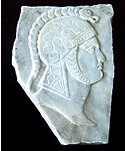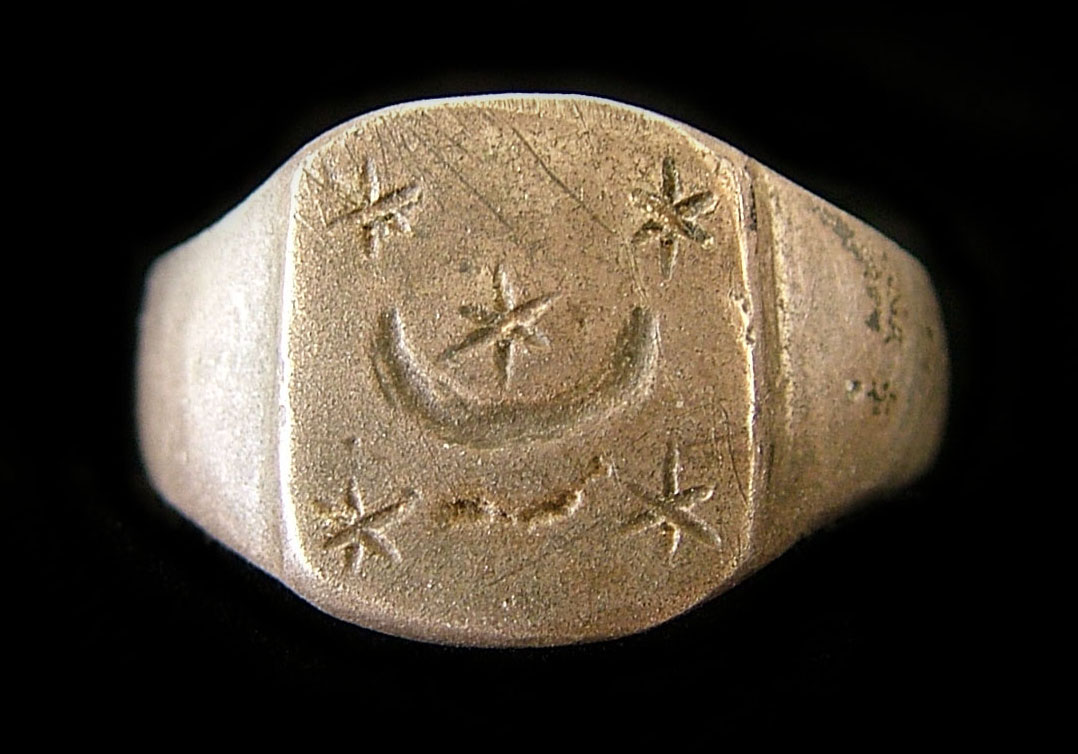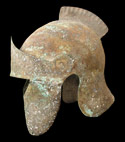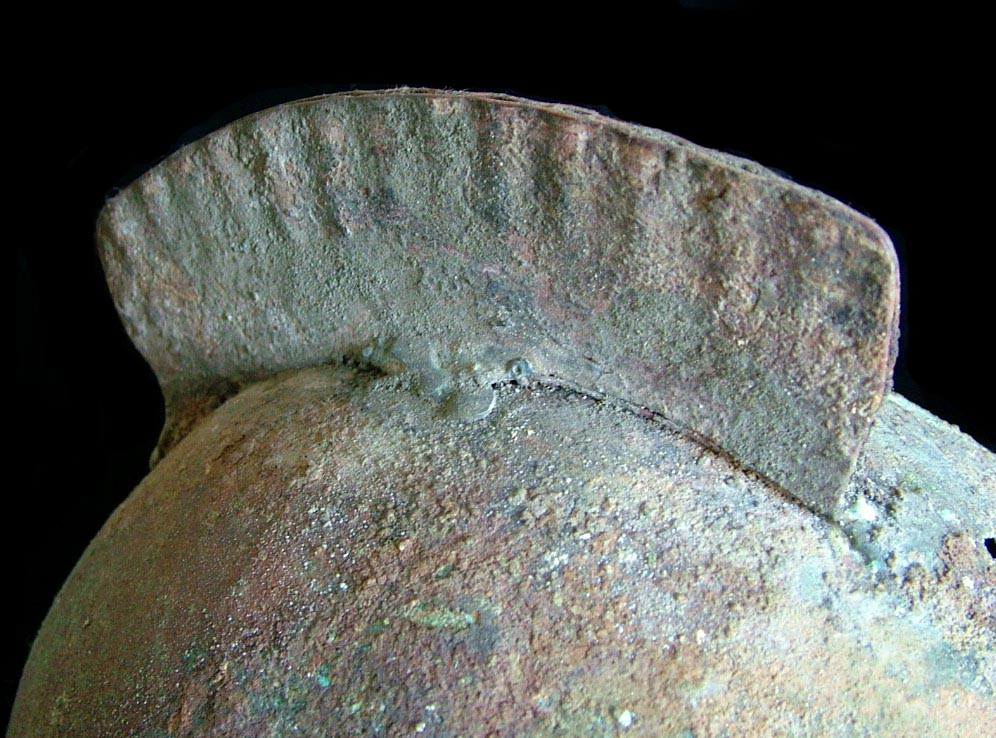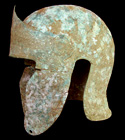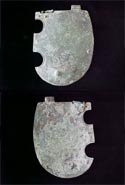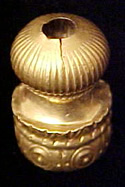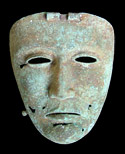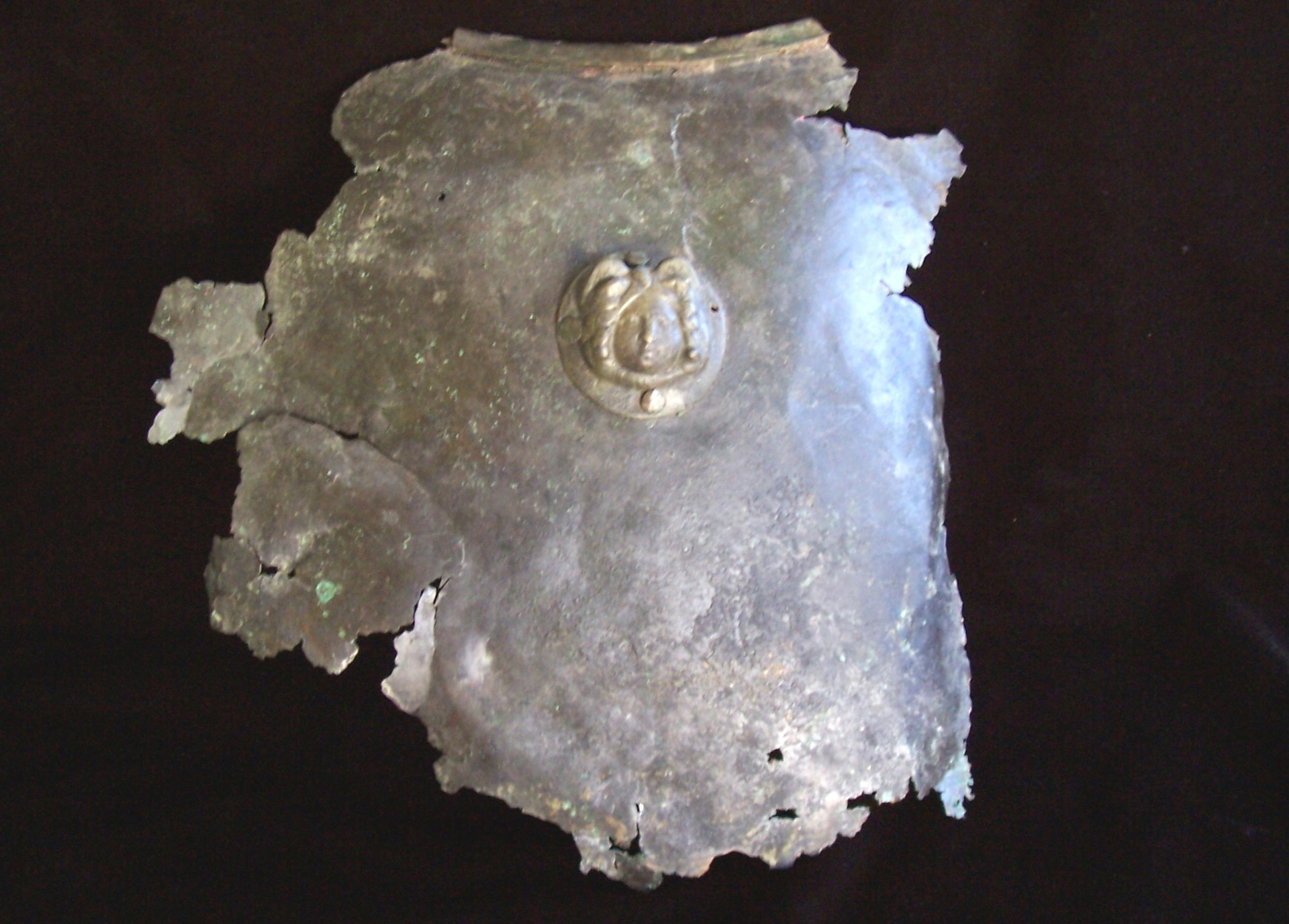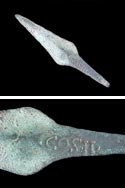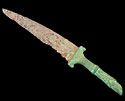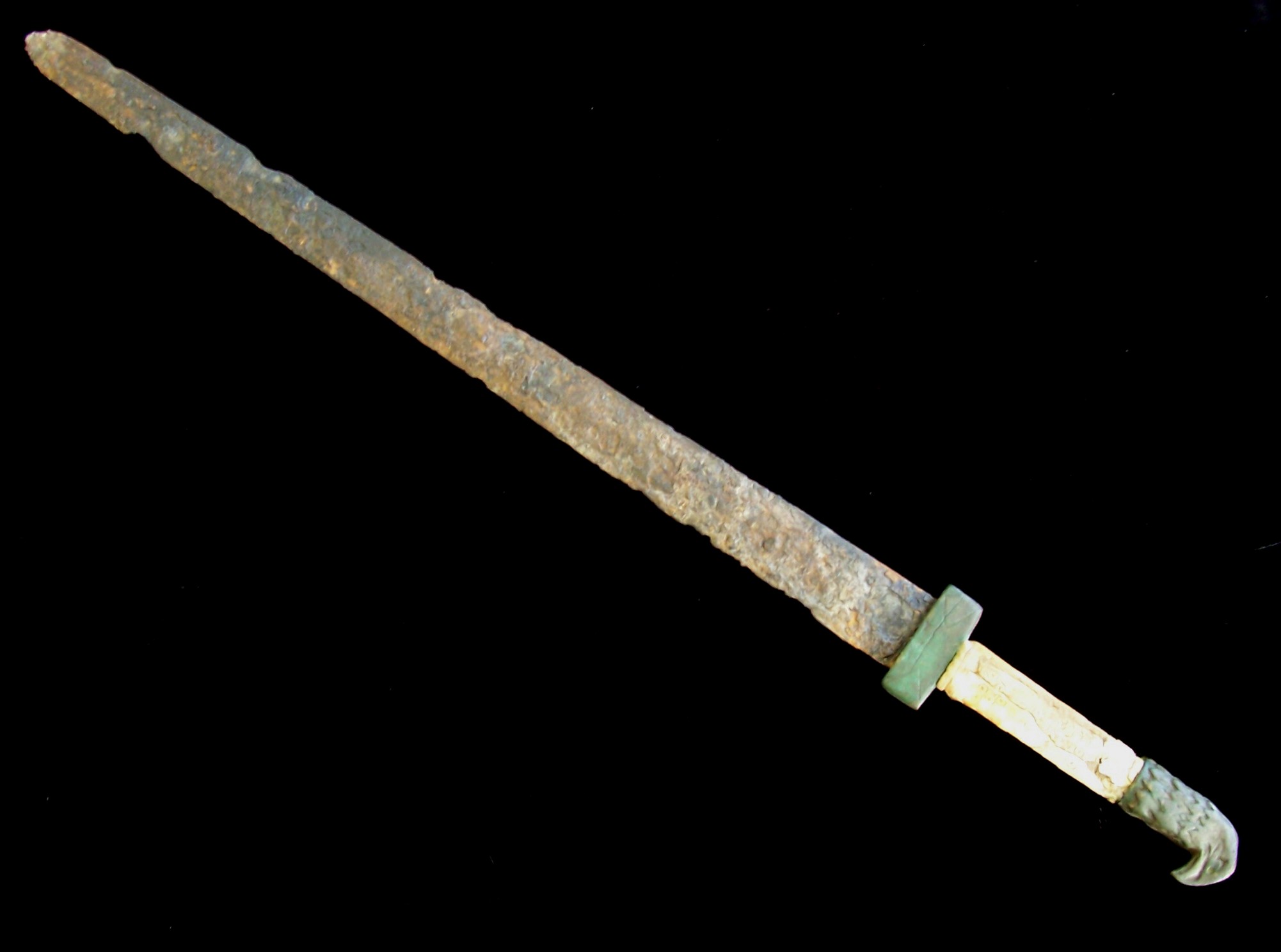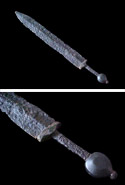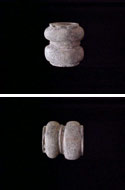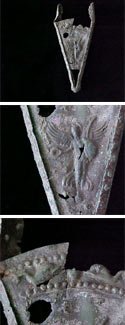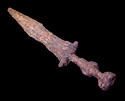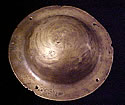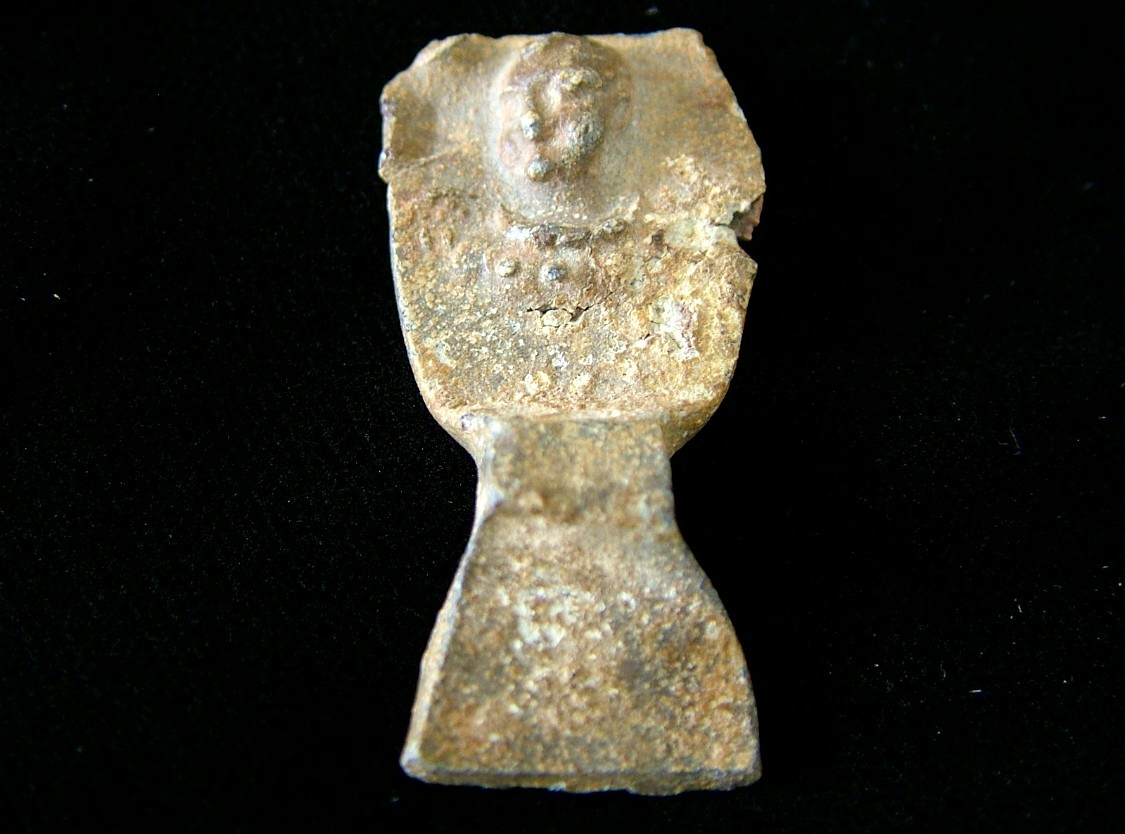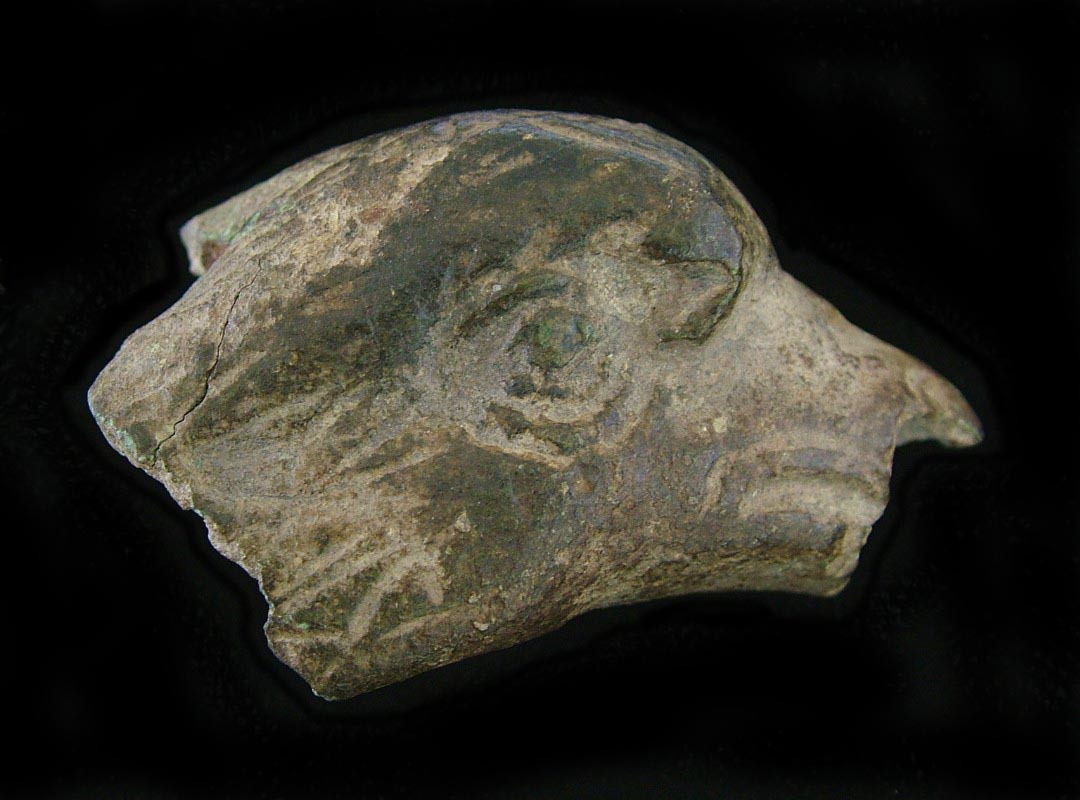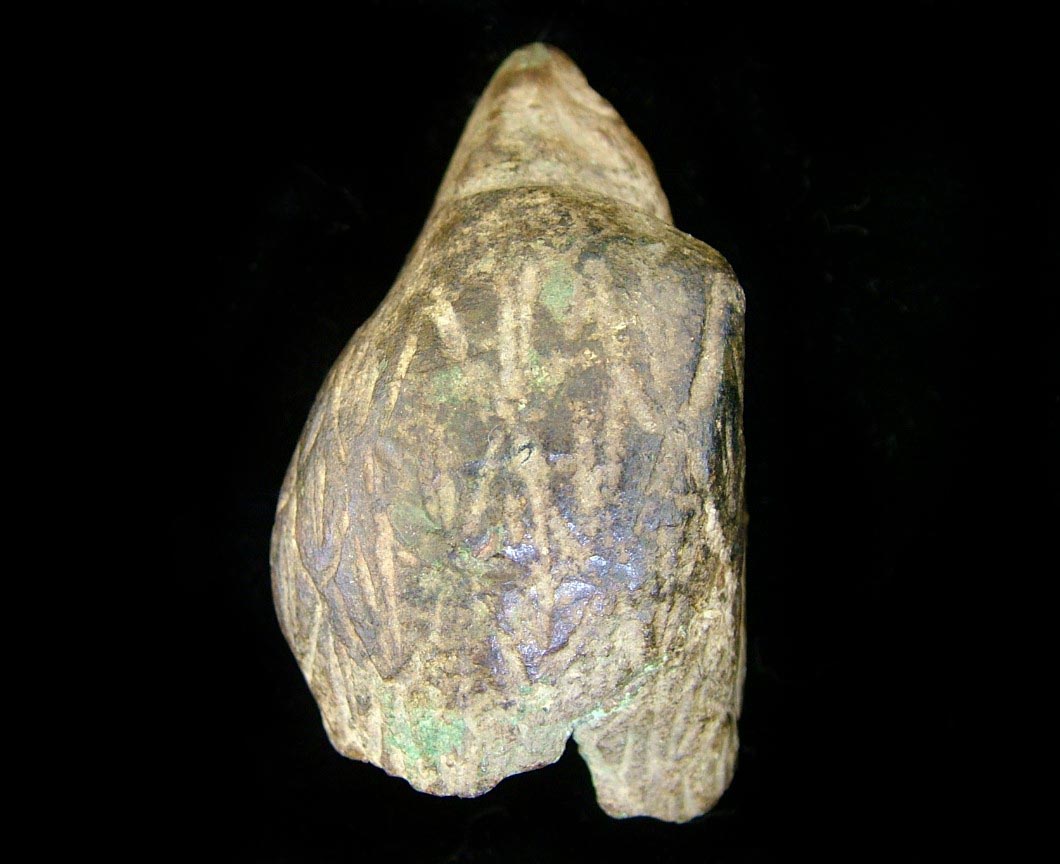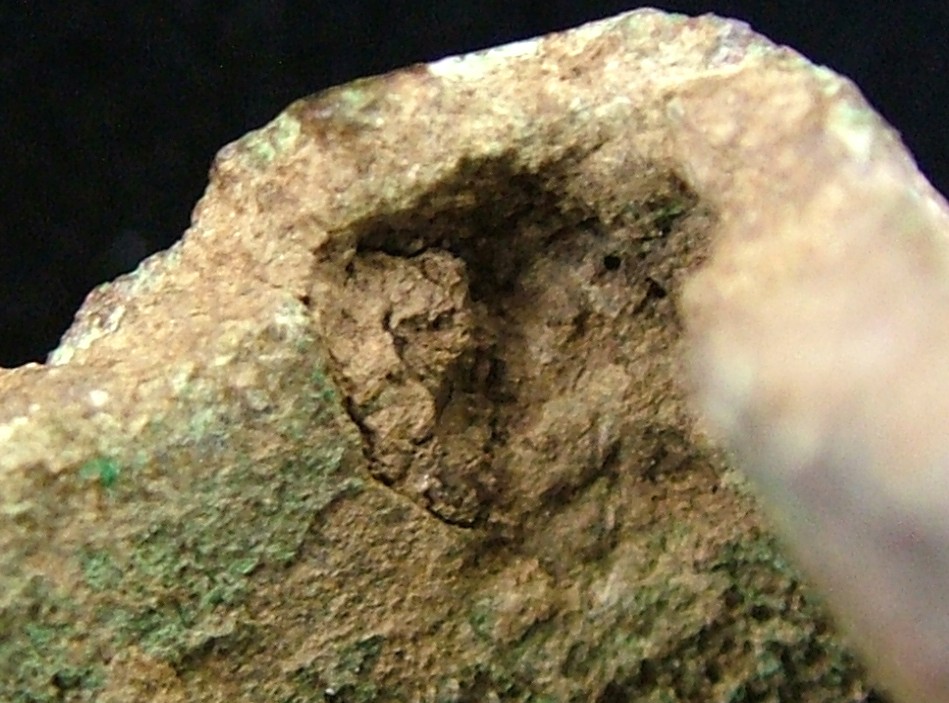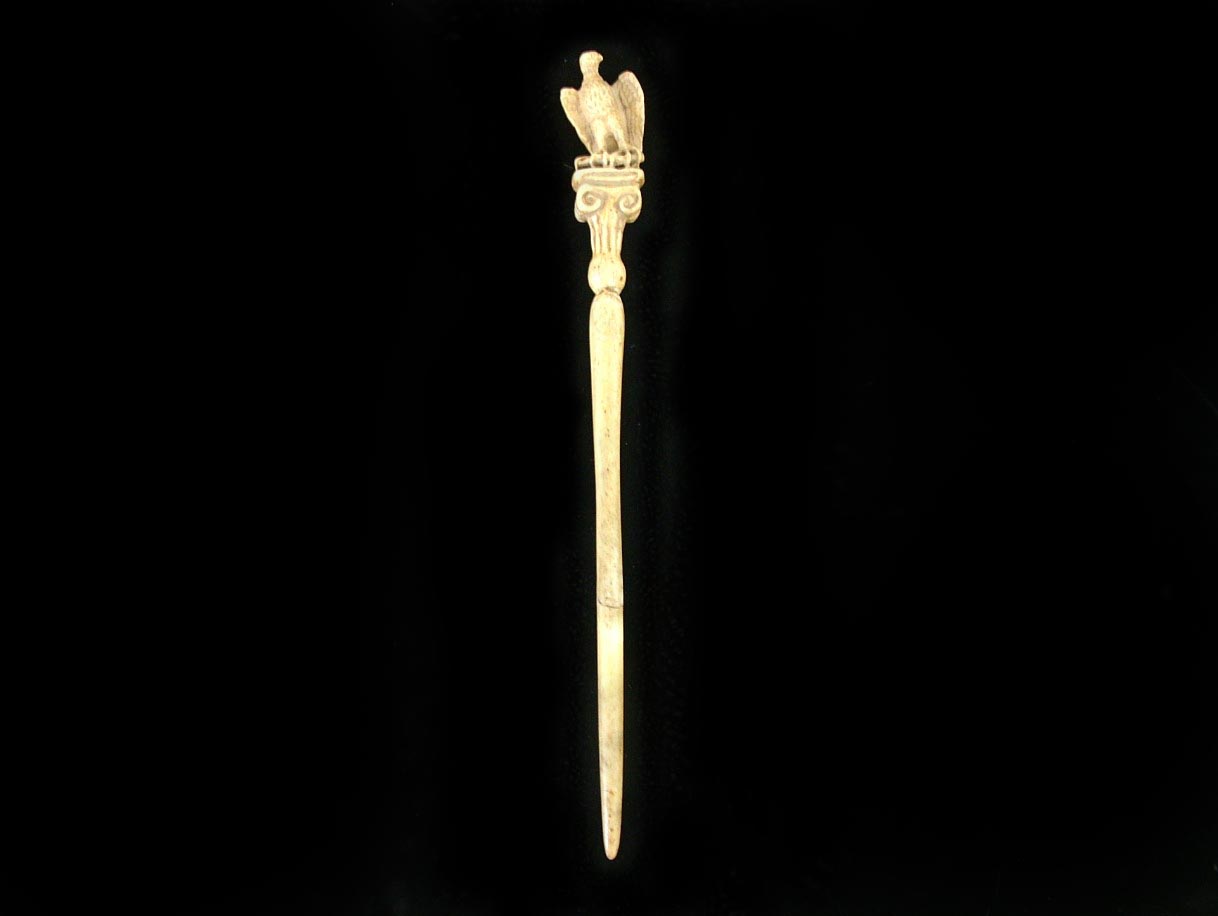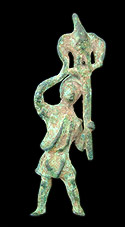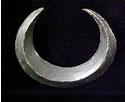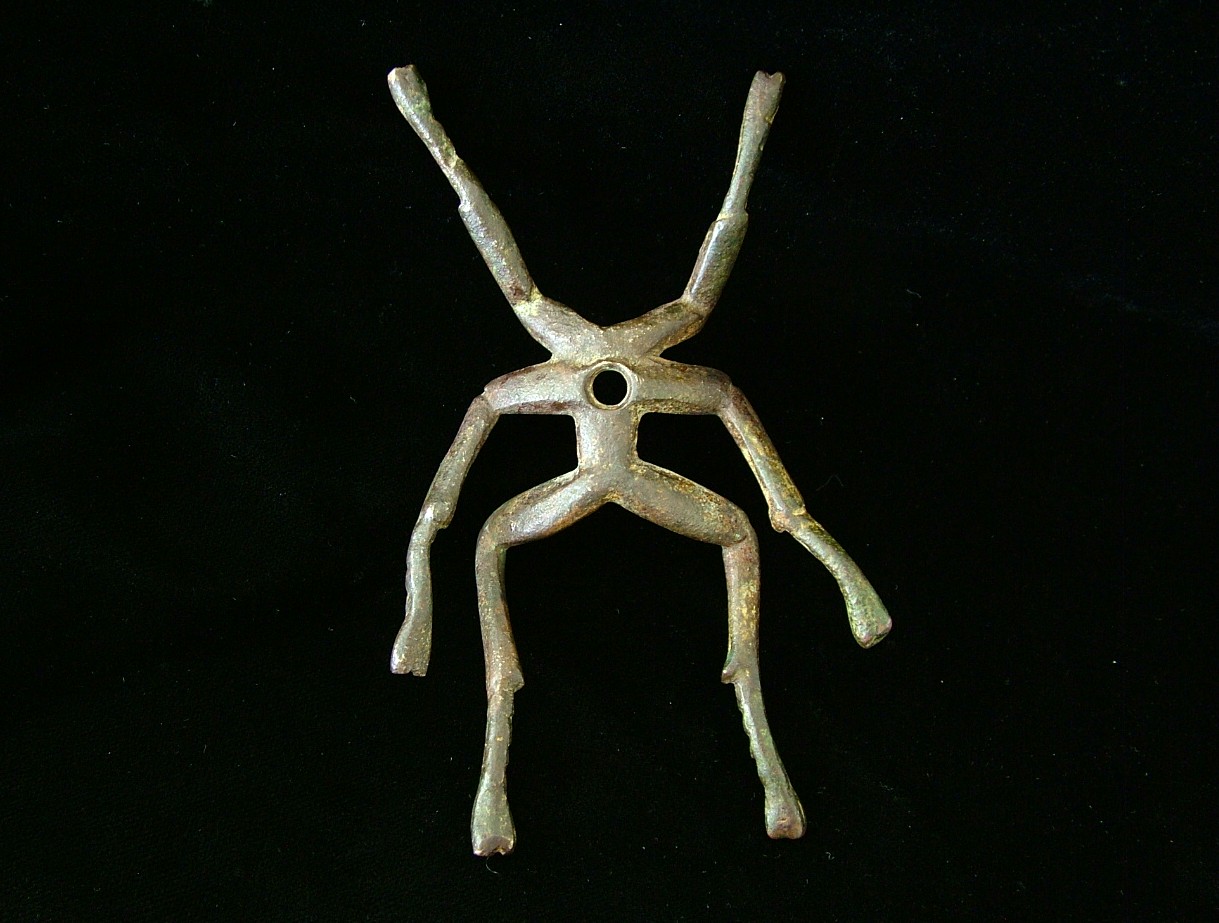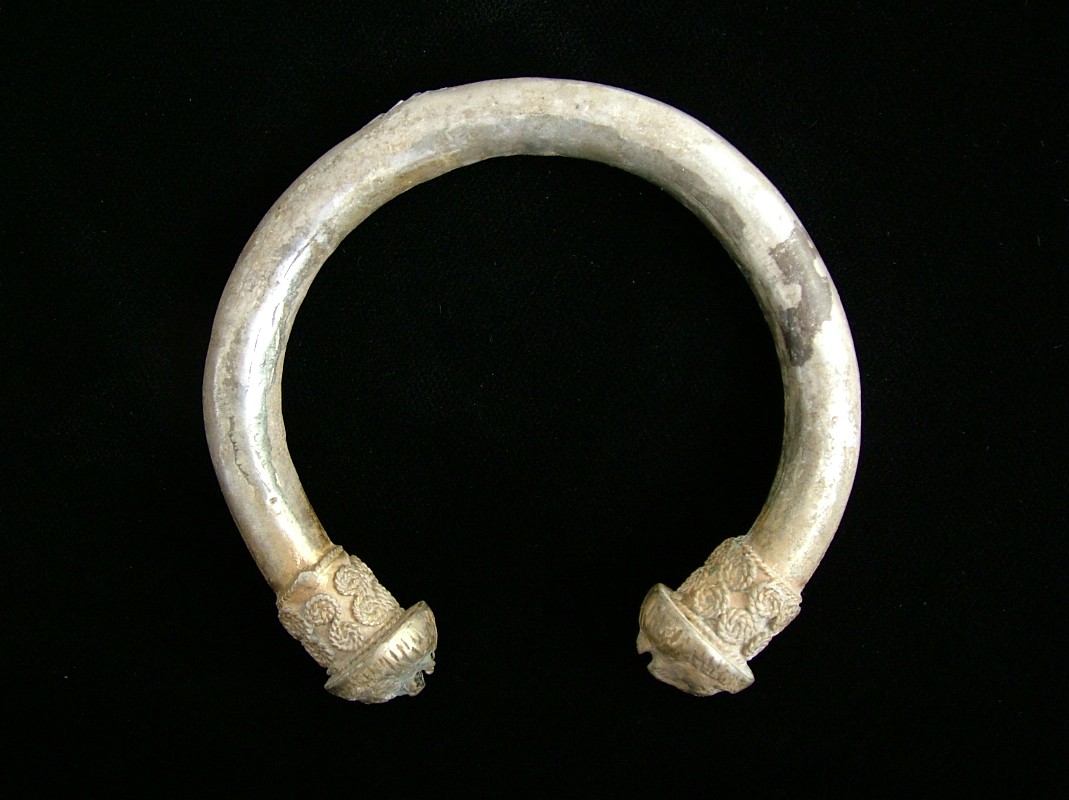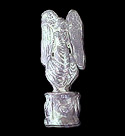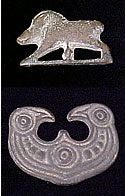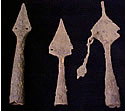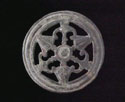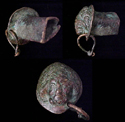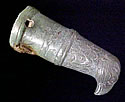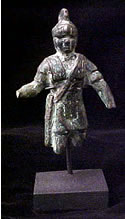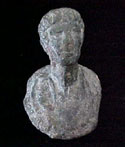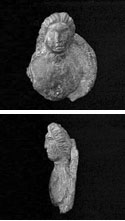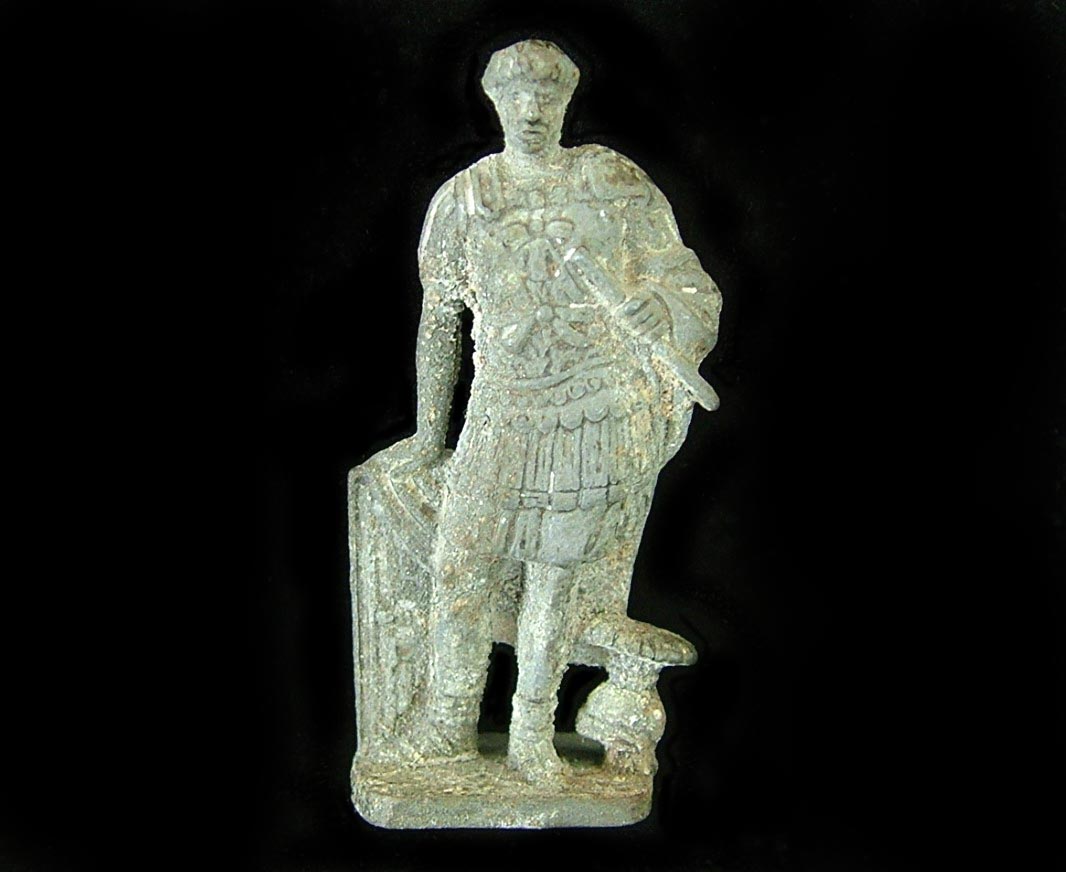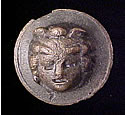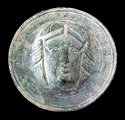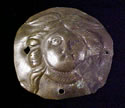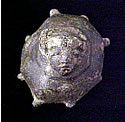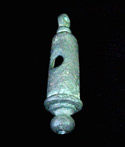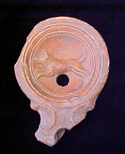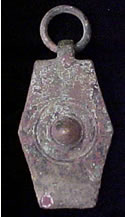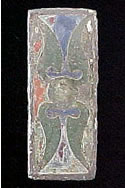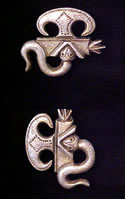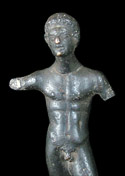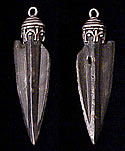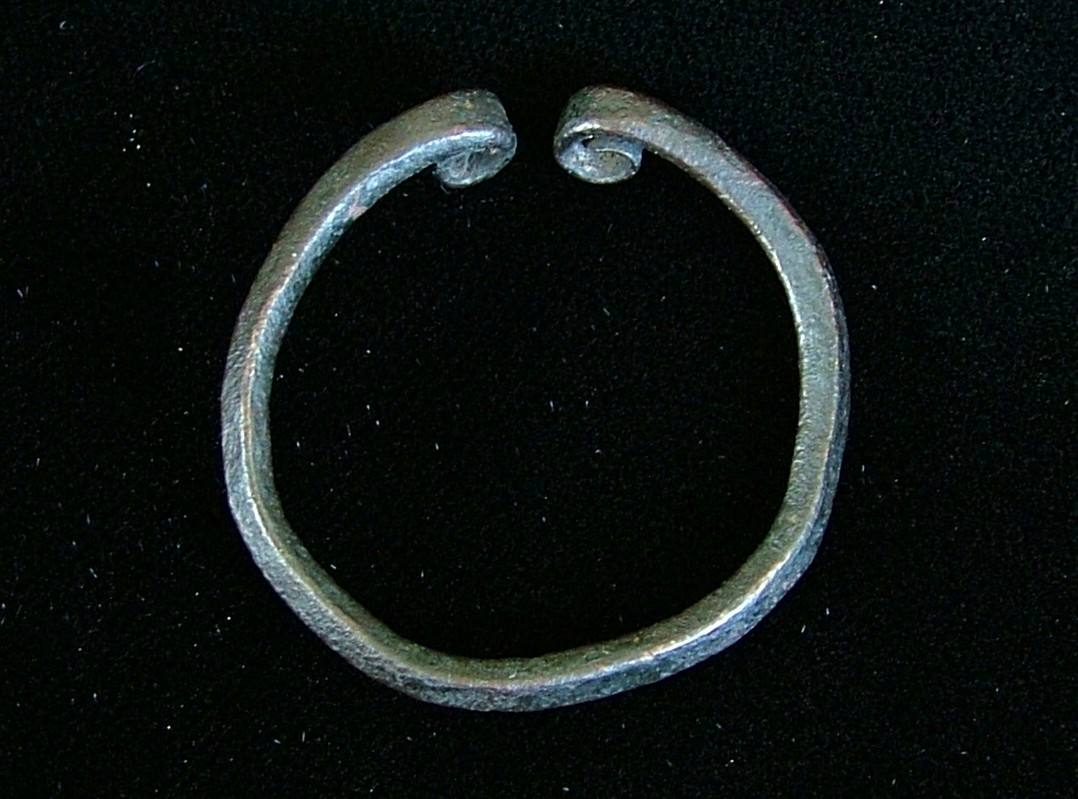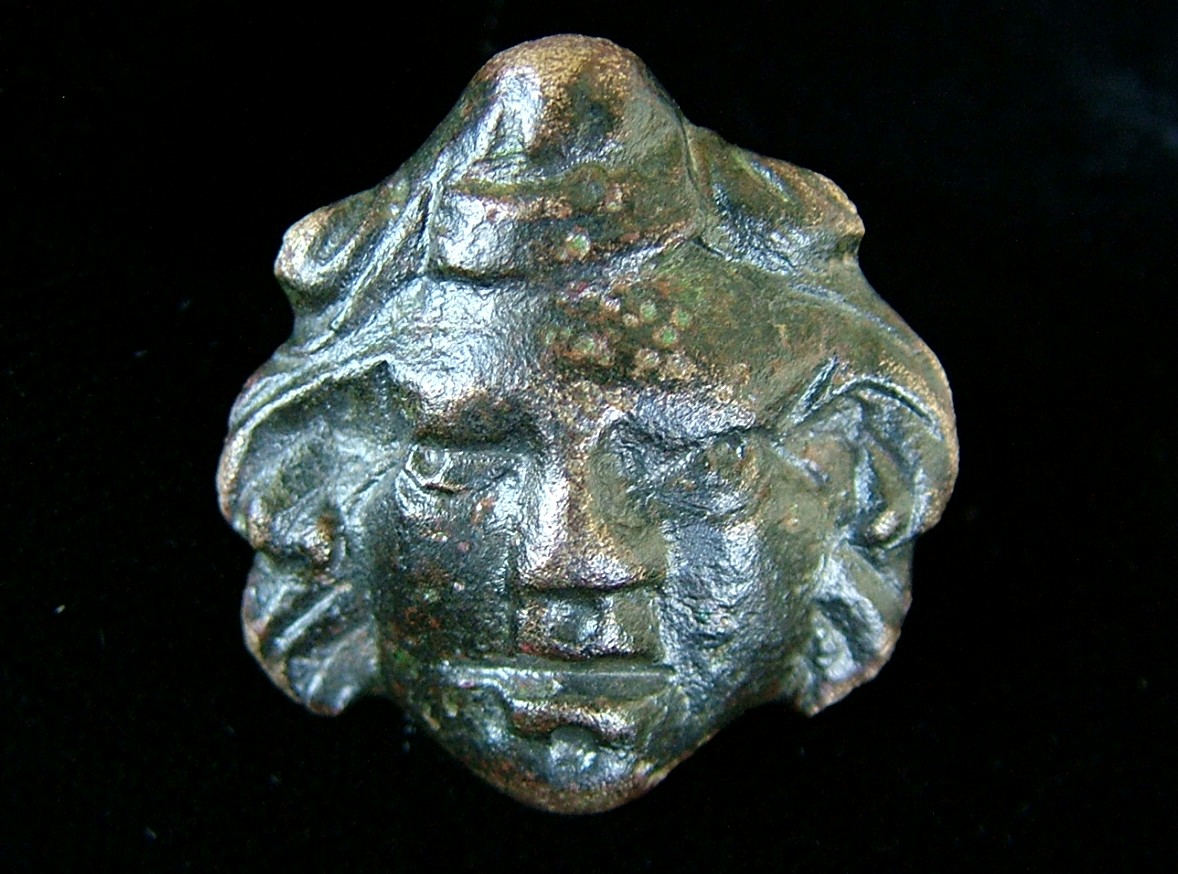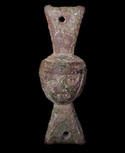 |
|---|
| |
Various artifacts listed here and others with this collection were used for illustrations in the Greenlight book "Roman Buckles and Military Fittings" by Andrew Appels and Stuart Laycock
|
||||||||||||||||||||||||||||||||||||||||||||||||||||||||||||||||||||||||||||||||||||||||||||||||||||||||||||||||||||||||||||||||||||||||||||||||||||||||||||||||||||||||||||||||||||||||||||||||||||||||||||||||||||||||||||||||||||||||||||||||||||||||||||||||||||||||||||||||||||||||||||||||||||||||||||||||||||||||||||||||||||||||||||||||||||||||||||||||||||||||||||||||||||||||||||||||||||||||||||||||||||||||||||||||||
| |
|||||||||||||||||||||||||||||||||||||||||||||||||||||||||||||||||||||||||||||||||||||||||||||||||||||||||||||||||||||||||||||||||||||||||||||||||||||||||||||||||||||||||||||||||||||||||||||||||||||||||||||||||||||||||||||||||||||||||||||||||||||||||||||||||||||||||||||||||||||||||||||||||||||||||||||||||||||||||||||||||||||||||||||||||||||||||||||||||||||||||||||||||||||||||||||||||||||||||||||||||||||||||||||||||||
| |
|||||||||||||||||||||||||||||||||||||||||||||||||||||||||||||||||||||||||||||||||||||||||||||||||||||||||||||||||||||||||||||||||||||||||||||||||||||||||||||||||||||||||||||||||||||||||||||||||||||||||||||||||||||||||||||||||||||||||||||||||||||||||||||||||||||||||||||||||||||||||||||||||||||||||||||||||||||||||||||||||||||||||||||||||||||||||||||||||||||||||||||||||||||||||||||||||||||||||||||||||||||||||||||||||||
| MARBLE ICON DEPICTING THE ROMAN DUX LUCIUS ARTORIUS CASTUS |
|||||||||||||||||||||||||||||||||||||||||||||||||||||||||||||||||||||||||||||||||||||||||||||||||||||||||||||||||||||||||||||||||||||||||||||||||||||||||||||||||||||||||||||||||||||||||||||||||||||||||||||||||||||||||||||||||||||||||||||||||||||||||||||||||||||||||||||||||||||||||||||||||||||||||||||||||||||||||||||||||||||||||||||||||||||||||||||||||||||||||||||||||||||||||||||||||||||||||||||||||||||||||||||||||||
| Material: Gray Marble Our archive is still under construction. Once completed it will include detailed information and pictures of this artifact. The pictures with this artifact have a focus on a micro piece of silver metal (it is 1 mm in length), it may be a relic. To the scientific mind the belief in relics is mere primitive superstition and it is dismissed as such. To the believer, relics (either real or supposed) are viewed as anchors of the past that provide faith in the present and future. Apparently jewelers and other artisans whenever possible or by commission would incorporate relics or bits of relics with miniature or micro art in their creations. Research of miniature art on artifacts shows that weapons makers, artists (sculptures and painters), and jewelers were the keepers and recorders of the history and, or beliefs of a people; furthermore miniature art on prehistoric artifacts show that this practice is extremely ancient. According to my observations, miniature art still continues among some traditional jewelers and a few metal smiths (apparently usually with little or no knowledge of this on the part of the client), but it appears to have disappeared with sculptures and painters; it may be last seen with the older European artists of the 1950's. In 2007 a major museum in the U.S. announced the finding of miniature art on a painting done by a master artist, it is considered to be an important discovery. There are certain artifacts that may contain relics that are listed on this website and on kingarthurbanner.com. The micro metal piece on this Marble Icon of Lucius Artorius Castus may represent a piece of a: standard, helmet or armor. According to new research on the "Saxon Ring Of Arthur As The Scythian Navigator, Thunderer, and War god", it appears that there are at least a few symbols that represent the Soma of the Indo Europeans. As soon as information with the "Saxon Ring" is updated, speculations concerning this proposed relic will be posted. Out of hundreds of Roman legionary artifacts and years of study another "Artorius artifact" will soon be added with this marble icon of Lucuis Artorius Castus and the VI Victrix Ring, it is a Roman silver ring that I have titled the "Artorius Ring". It appears to have originated from the same location in England as the VI Victrix Ring, what is known for a fact is that it was purchased from the same old German collection (of legionary rings) shortly after the purchase of the VI Victrix Ring. Just to mention it, during that same time period a collector who is a friend contacted me to ask for an authentication of a silver legionary ring of XX Valeria Victrix, it was from the same old German collection and similar in style. It is most probable that all three of these rings (VI Victrix Ring, Artorius Ring, and XX Valera Victrix Ring) had been found together. Anyhow, the Artorius Ring is mainly to do with Sarmatian celestial and other gods and goddesses in connection with "AL I SARM (Ala I Sarmatia" and Castus as their dux, a victory over the Picts, and either an expedition or a victory over the Gauls, there is also a mention of Frisians in the service of Rome. It shows a mystical helmet, armor, weapons, standards (of pennants and windsocks with the following animal or creature heads; Bear Dragon, Dog Dragon, Crocodile, Horse, Lion Dragon, and Wolf Dragon) being made and delivered to Castus by among other things a celestial horse's right fore-leg and hoof. There are also many animals/parts of animals and creatures/parts of creatures (including dragons) connected with various parts of the armor and standards, but the largest is a horse's leg/hoof and head, and a dog' or dog/dragon's head. The primary theme is the Sarmatian war/sword god having the power of his sword being symbolically delivered to Castus. There is much more with this, some of it shows symbolism of an exact belief of the Sarmatian and the Scythian war/sword god. Concerning the Sarmatian war / sword god I should be able to obtain photographs of the following. On the underside of the bezel and among other things but central there is a large alter that has a large three headed figure holding a long sword diagonally upright. The three heads are; a woman's head facing up and to the left, a dog dragon's head facing the viewer, and a bearded man's head facing downward and to the right, the bearded man is holding and looking at a small boy. There are inscriptions in bind letters, I may or may not be able to photograph these, but nevertheless they read "TIB" which should stand for the Scythian root word TAB for fire, or the Hurrian word TIBIR for fire smith god. The next word in small letters is "SED", this should be the IE. word SED for settlement and the Roman word SEDERE for to sit or to settle. The last inscription is "BRETV", this should stand for the Roman Fort and veteran's colonia at Bremetennacum Veteranorum (in modern day Ribchester, Lancashire, England), the fort was garrisoned by Sarmatian cavalry. The position of the long sword's tip is exact as to where on the bezel a large celestial or aerial sword blade appears, the sword's blade, the sword's hilt, and a smoking pipe are being put into a large sheath that has a ram's head in one position and a beaver's head in another position, the sheath is Castus's sheath. Much of the information on the ring supports information on this Artorius icon marble piece and the VI Victrix Ring. As soon as I complete the Judea Capta Group of artifacts I will post information and pictures of the Artorius Ring.This is a marble image in relief of Lucius Artoriius Castus of the VI Victrix as a Roman Dux (Special General) who is seen by some as an ancient contender for a primary influence for the Medieval King Arthur figure. My research with artifacts shows that Castus was "an Arthur", but not "the famed Arthur" of those times. This is due to the discovery of a previously unknown Belgic (Celtic/Germanic) bear god named Artor who was connected to the Celtic war/sword god named Camulos (a Roman version of this god was named Mars Camulos). There is every indicator that both Artor and Camulos were gods of a mystery that had initiates, and that the Britannic Islands were connected to this. It appears that the following rulers may have been associated with such a mystery; Julius Caesar, possibly Augustus, Claudius, Vespasian, and Titus; although there may have been others (for example Augustus and Titus may" have been the only rulers to inherit such a title). There are other indicators that the Emperors; Caligula, Domitian and Commodus may have attempted to gain such a recognition, but failed. It appears that Castus may have been the only none-Roman ruler to gain such a title, and that this was honored by the members of Legion VI Victrix, the Campanians, the region of his last posting in Dalmatia (modern Croatia), and possibly some Cavalry units. The icon was found in Campania, Italy in the 1930's. According to authors and Castus Researchers Linda Malcor and Scott Littleton, Campania was the home of the Artori family and the birth place of Castus. It has miniature art on the front, all five sides, and the back. It has been coated in isinglass (sturgeon glue). Speculation is that it was broken off a monument and removed at some time in the Late 2nd to Early 3rd C. AD. What is verifiable is that in antiquity it was made into a icon/memento that could be hand. It has a perfect hand fit for someone with an approx. American 7 to 9 glove size. I had thought that the art on this piece was somewhat unique for Roman art, but I discovered that this was not so with some miniature art of the Roman Period. The icon has been cross referenced with dozens of artifacts and it is now certain that it is of the Roman Imperial Era. The next three picture groups titled "Lucius", "Artoriius" and "Castus" show that the symbols may connect to the names of Castus. It is a speculation that may be based on coincidence only, but nevertheless I think it is worth consideration. Copyright 2008 David Xavier Kenney Revised Sept 2010 An image of this artifact is published with permission in the Athena book King Arthur: Tra storia e leggenda. Da Cimitile a Camelot, by Mario de Matteis and Antonio Trinchese. This image has also been in many numerous newspapers and magazines.
|
|
THE "ARTORIUS RING" OF LEGION VI VICTRIX
|
Material: Silver When this is posting is completed the information and pictures of the art/inscriptions on this ring will finely solve the puzzle on who had been the ancient figure that had been the inspiration for King Arthur of Medieval lore, hands down it was Lucius Artorius Castus. It will also show exactly who Cuneglas had been (or rather who the god that Cuneglas worshipped had been) as described by the 6th C. AD British cleric Gildas in his De Excidio Britanniae, it was without a doubt a reference to a celestial Northern Germanic high smith god of blade weapons. Further more it will show that the Germans in the ranks of the VI Victrix had connected Castus to this god when he was promoted to Dux in 185 AD in a year of two Great Comets, and that at some point (most likely upon his death) that he had been deified as a celestial assistant of that god. There is also a lot of information on this ring that coincides with that which is seen on the Marble Icon of Lucius Artorius Castus! The ring had been purchased from the same German dealer as the VI Victrix Ring that had been excavated in England. I have every reason to believe that both rings had derived from the same area, most likely somewhere in or around York, England. The ring is covered in miniature art/inscriptions, these have been studied and researched over the last few years, but the photography has yet to be completed. As the art had been done in layers and will transform (in a type of animation) when the ring is moved, then the photography has to be at exact angles and during daylight, it is a time consuming process. My findings show that either the ring had been made for a German serving in the VI Victrix, or that the VI Victrix had a large number of Germans in it's ranks in the 4th C. At a glance the miniature art on the bezel shows five stars and a cresent moon with horns that point up (a Cheshire Moon, or Winter Moon), these have a reference to Constantine. The five stars in such a formation are symbolic of the five wounds of Christ. The main theme is of the Christian labarum (Chi Rho), a lion headed windsock, and blade weapons replacing the VI Victrix pagan standards, but yet this transformation is being issued forth from a celestial Northern Germanic bear/dog high smith god of sacred blade weapons and standards. The celestial high god is assisted with this by a figure in and as one of the stars, the inscriptions state that the figure is the spirit of Lucius Artorius Castus bearing several standards (among other things Castus's pennant standard displays the Dioscuri). With this he is also a sled (hitched to an aquatic unicorn) driver (just like Cuneglas) and a boat pilot/navigator of the celestial high god. If that is not enough, then know that he is also the bearer of that god's massive celestial hammer, it is a hammer that attacks the old gods/goddesses and their standards and makes new sacred blade weapons and standards. As mentioned previously it suggests that at some point that the Germans in the ranks of the VI Victrix had defied Castus in connection with their celestial high god, it also suggests that Constantine may have had a special relationship with the VI Victrix, most likely from when he had been proclaimed Augustus at Eboracum (York)in 306 AD. It appears that both Castus and Constantine were titled "Felix" (Lucky) by the VI Legion. The underneath of the bezel shows a Legionary propeller belt mount. On the belt mount there are figures of the Virgin Mary in a large halo with angels (this may depict the Assumption), there also appears to be at least some of the Apostles. They are placing a Roman Attic helmet with a letter "M" (most likely for the Virgin Mary) on the head of a Legionary that has a large letter "A" next to him ("possibly" representing some form of the name Arthur or the title Augustus, or both of these), as well as delivering a vertical legionary type belt* and a rectangle shield with the letter "P" (most likely for St. Peter) on it. There are demonic appearing figures around this, there is also a figure in a Phrygian cap as if fleeing (most likely representing the defeat of Mithraism). Overall it shows that the Christian weapons and military standards are created by a Germanic pagan high god of weapons and aggression, but that anything protective is solely Christian and passive. In my opinion this shows what must have been considered a relatively new concept for the entire Roman Army (my findings show that Christians individually had served in the Roman Army as early as the Flavian Era), that is Roman Legionaries in mass aggressively fighting for a God who represented the passive. Such a dualistic concept can be seen with Medieval Arthurian lore, it may also explain the mixture of Christian and pagan themes of the Medieval Knights. * The belt may also be the girdle of the Virgin Mary in connection to the Assumption, this is only known and in connection to St. Thomas several centuries later. Copyright 2011 David Xavier Kenney Revised 2011 If you would like to view more pictures and information with this artifact Click Here! |
|
ROMAN ATTIC HELMET OF A PRAEFECTUS OF AUXILIARIES AND A VETERAN OF THE BATTLES ON THE GOLAN HEIGHTS AND THE SEA OF GALILEE OF THE FIRST JEWISH REBELLION
|
Material: Bronze and Copper With Traces Of; Gold Gilding, Silver Gilding, Lead Overlay, Lead Wash, Resins, and Niello
|
| |
The inscriptions and art depictions on this helmet show that it had once belonged to a Praefectus of Auxiliaries or a Tribune of a Legion (possibly of Legion XV Apollinaris), but with a mention of the Auxiliaries at the Battle of Gamla and the Battle of Lake Gennesaret / Town of Tarichaeae (aka Magdala) during the First Jewish Rebellion (66 to 70, or 73 AD). At least some of the Auxiliaries were Sarmatians and Cavalry. While the helmet itself is made of bronze the crest is made of copper. The crest shows a victory over the Parthians on one side and victories over the Jewish Rebels on the other side, how a victory over the Parthians (that must have been in the Roman Parthian War from 59 to 63 AD) would have fit into the Roman Officer's career I do not know at this time. The visor shows stamped laurels of a crown award, then stamped and engraved figures of a victory over the Parthians (and possibly the Jewish Rebels) between the laurels. The entire helmet inside and out has engravings with trances of gold and silver gilding, lead overlay, lead wash, and niello; then layered art done in paint and tints, it appears that there had been a type of lacquer or resins over at least some of this. The crest had at least one repair in antiquity, this may suggest field use. There are remnants of a "V" front wedge plume insert that was possibly made of wood or bone or ivory, or wood and bone or ivory. The insert is probably the reason that the crest is made of a more flexible metal such as copper. |
| |
"FLYING FLYNN" ROMAN BRONZE MARS QUIRINUS (WAR ROMULUS) AND BELLONA (AS THE CHARIOT)STATUE |
Material: Bronze With Traces Of Gold and Silver Gilding To my knowledge there are three other known examples of this type of statue. Two of the others are smaller, have less detail, some slight damage, are missing the javelin, and are not capable of tipping forward in the flying position. A third example was recently brought to my attention by a gentleman in Swedan who originates from Germany, it is in his collection in Germany and was found "in the sea of Naples (this should mean the Bay of Naples or thereabouts)", it was obtained prior to 1914 by the gentleman's grandfather from the well known art/antiquities dealer/consultant Ludwig Pollak, the grandfather was also a friend of the classical studies publisher Max Bretschneider. Although the statue may be a bit smaller it is near exact to the example seen here (amazingly the javelin is also intact), although the engravings on the chariot are in fact different and it understandably has a much thicker patina. After extensive research I wrote a paper on the statue seen here a few years ago. Among many other things I had at that time speculated that it may have been made at a Roman foundry in Neopolis (modern Naples), and that due to the technique that the foundry may have mass produced, I am now convinced of this. Although this type of statue was of Mar's in the City of Rome itself, they may have been made exclusively in Campania, it is of a type of Mars as Mars Quirinus (Mars Romulus) that had just as much to do with fertility and agriculture as war, another words it is the earliest form of Mars, but combined with Quirinus (Romulus deified). It also gives the answer to the Mars winged phallus pendants (they are distinct and the most typical of this type of pendant) that were so popular with the Romans, they represent this type of Mars as the ram of spring, the seeding of the earth, and the opening of the campaign season. Interestingly reproductions of such pendants are still produced in Naples and are (or once were) popular with tourists and visiting sailors as curios, the pendants are (or once were) nicknamed the "Flying Flynn'" (that name is another story) by British sailors, so at least this statue of this statue type is now so named. The large face on the chariot's front may be the closest to seeing an image of Mar's consort (or sister) the war goddess Bellona (there are no known images of Bellona from antiquity), it is made so when viewed from different positions it will change from a beautiful woman's face to a wavy hideous face. Unlike Mars who is the ideal of war, Bellona is a changing force of nature and the reality of war. The face/faces also have a type of map to do with the Temple of Mars, the Temple of Bellona, the Temple of Apollo Sosianus, the Campus Martius, and the Quirinal Hill (now the official residence of the President of Italy). Copyright 2009 David Xavier Kenney
|
| |
ROMAN ATTIC HELMET OF A PRAEFECTUS CLASSIS AND A VETERAN OF THE BATTLES ON THE GOLAN HEIGHTS AND THE SEA OF GALILEE OF THE FIRST JEWISH REBELLION |
Material: Bronze and Copper With Traces Of; Silver Gilding, Lead Overlay, Lead Wash, and Paint The inscriptions and art depictions on this helmet show that it had once belonged to a Praefectus Classis or perhaps a Navarchus Princeps. The high ranking Naval Commander had been from one of the two Black Sea Fleet's and had been at the Battle of Gamla and the Battle of Lake Gennesaret during the First Jewish Rebellion (66 to 70, or 73 AD). It is very possible that the Praefectus had commanded the hastily made Roman Fleet at the Battle of Lake Gennesaret. According to the helmet's art it appears that there were Sarmatians, Germans, and Thraco-Dacians in his command. The visor shows stamped laurels with rope and waves of a crown award. There are exotic looking swords and creatures, in the center there is a figure as if offering up a short sword. The entire helmet inside and out has engravings with trances of silver gilding, lead overlay, lead wash; then layered art done in paint and tints, it appears that there had been a type of lacquer or resins over at least some of this. Although my research shows that Roman Attic helmets had been exclusively for those of Equestrian rank or higher, the lack of a crest and the straighter neck guard may imply that it symbolizes something just below the Equestrian class, possibly a Navarchus Princeps, or it may have just been a nautical style. ROMAN LEGIONARY NAVAL WATER COMPASS CUP, AKA "THE HERCULE'S CUP" (Archived)
|
|
|
ROMAN LEGIONARY COOLUS TYPE C HELMET CHEEK PIECE BELONGING TO A HELMET OF A LEGIONARY OF LEGION XVII CLASSICA (NAVAL) VICTRIX, AN ARTIFACT OF THE TEUTOBURG FOREST (OR VARUS) DISASTER OF 9 AD IT IS ALSO A BATTLEFIELD RELIC (OF THE XVII) VOTIVE OF GERMANICUS'S FORCES AT THE TEUTOBURG BATTLE SITE C. 15 to 16 AD.
|
Material:
Bronze, Lead Overlay, and Fossilized Leather Until recently the identity of the 17th Legion at the Teutoburg has been unknown (as well as that of the 18th and 19th legions). With that stated, the art and inscriptions on two of the rivets on this cheek piece (and even more so with later inscriptions and art made by Germanicus's Forces) specifically identify the 17th Legion at the Teutoburg as the XVII Classica Victrix. Research with other 1st C. AD artifacts suggests that the loss of a legion with a naval tradition under the overall command of Varus a former Governor of Syria (who during that governorship from C. 7 to 4 BC and had quelled a rebellion in the Galilee and Judaea) "may" have been perceived at that time as an exceptionally bad omen for the future of the Roman Empire. The research with the connection to Germanicus's Forces with this artifact is dedicated to my friend Jacki an Uber Filmbesprechung-Puppe and my friend Sarah an Uber Modedesignerin-Puppe. Tausend Dank to Nils, and Ich bedanke mich to Linda and Renee!If you would like information and images of the art and inscriptions on the cheek piece that were made by Germanicus's Forces including the absolutely unmatched micro miniature art of any era that shows Legion XVII's Aquila (Eagle) please Click Here! |
|
ROMAN GOLD
GLADIUS POMMEL/TANG CAP OF THE SWORD OF THE LEGATUS OF THE XVII CLASSICA (NAVAL) VICTRIX OF THE TEUTOBURG FOREST DISASTER, WITH A DEDICATION TO THE CELTIC WAR/SWORD GOD CAMULOS |
Material: Gold Due to the delicate workmanship of this gold cap it was thought to be for a stylus top, but miniature art and inscriptions on the bottom and a review of the pommels on Roman swords shows that it is not, instead it is a gladius pommel/tang cap, it is 17 mm in length. It had been on the gladius of the military Legatus (Commander of a Legion) of the XVII Classica Victrix, due to the inscriptions on the bottom there it almost certain that it had been on the sword of that Legatus at the Teutoburg in 9 AD. As just mentioned it has miniature depictions and inscriptions. Unfortunately prior to it becoming a part of this collection, it had been scrubbed. It has traces of fossilized wax and micro amounts of iron residue. It appears to have once had a hard wax filling and an iron tang and bead, the bead most likely had been gilded). This pommel/tang cap was brought to my attention and correctly identified by an astute high school student from California in 2002. There are similarities in style with this artifact and the tip of the sword chape of the famed Sword of Tiberius. Artifact Top: There are seven miniature roundels, on top of these are decorative motifs, there are twelve of these, there are also seven roundels. There is one roundel that has the Roman letters "VAR" inscribed on it (seen in Pictures 2 and 3), this will change to other letters when moved (Picture 4), it is an abbreviation for the Roman General Publius Quinctilius Varus of the Teutoburg Forest disaster in 9 AD. The focus is on the roundel next to it (seen in Pictures 5 thru 11), as it is of the Germanic rebel and Roman traitor Arminius and his tribe the Cherusci. A stylized depiction of a helmeted clean shaven Arminius can be seen with Picture 11, on the helmet there are the bind letters "MAR" (the Roman war god Mars) that can also be seen as "ARM" (Arminius), with the indented center there is a cup that holds three figures. Artifact Bottom: The photography with miniature art on gold is a very difficult and lengthy process, therefore for the time being I have only taken photographs of one theme and in one position seen with Pictures 15 thru 25. Although there is one small line break, it is along a line engraving and does not effect the art or it's meaning. The inscriptions and art on the bottom identify this as having been on the gladius of the Legatus of the XVII Classica Victrix. It also shows that the 19th legion (inscribed as XVIIII) had been stationed at Xanten, and that the 17th legion had joined them there, but yet there is a hint that the 18th Legion may have also been stationed at Xanten. Therefore it is at that time (possibly 8 to 9 BC) that the cap had been made, it may have been made as a replacement, or as a replacement votive. It is a votive to the Celtic war sword god Camulos of the Remi (as Camulos the Victorious), the god Mars, Caesar (Julius Caesar), the Emperor Caesar Augustus, and the XVII Classica Victrix. The sword god image dedication to Camolus is what is seen in the pictures. This shows the top half of a vertical Celtic sword with a large mushroom type pommel made of three figures (although the figures can not be seen in the pictures) in a mound (the mound is also a pilus helmet or hat). When slightly moved the sword is seen as a Herme, then when moved again it is a dagger (pugio). There is a bearded figure in a wolf's head/pointed hat to the left of the sword (this is also a Carnax), to the right there is a wolf that will not only transform into a bear but also a boar, as a boar it is biting the sword's grip. When slightly moved the mound will show various figures. As this area is not only has an inscription to Camolus the Victorious but also to the "Classica Victrix" (this one of three references to that legion), then it would appear that the 17th legion at that particular time had a large number of Gauls (or according to my research Germano Gauls) from the Remi tribe. The dedication to Caesar and or Augustus suggests that the god Camolus and his invincible sword symbolism had been intertwined with the cult of the Roman emperor. The Camolus symbolism with the much later 3rd C. Arthur Lance (Votive Contos of Carausius) with this collection suggests that a Camulos/Roman Emperor cult had continued. There is quite a bit of Celto Gaulish symbolism with the miniature art, but there are also a fair share of nautical themes. This suggests that the XVII Victrix had not just been a legion with nautical beginnings, but rather that they may have been a specialized Naval legion. Copyright 2010 David Xavier Kenney
|
| |
ROMAN CAVALRY PARADE HELMET MASK OF A VICTORY OVER THE PARTHIANS |
Material: Bronze The Bronze Cavalry Mask has lead overlay and with some calcification, it is 19.7 cm in height by 16.5 cm at it's widest width. It is covered in art and inscriptions done with tints (that may have once included tinning with gold, and, or silver gilding) and possibly paint, most of these are very faint. The overall theme is the a capture of Parthian standards and a victory over the Parthian's in the Roman Parthian War (59 AD to 63 AD). All the Roman Legions involved in that war are mentioned in bind letters, but not their numerals. The mask appears to have been from Alae G Afros "ALA G AFROS", the letter "G" is much larger so it may not be part of this inscription, nevertheless this suggest Numidian Light Cavalry Auxiliaries, possibly originating from the Gaetuli, a tribe from Western North Africa. There is a mention of the avenging of Crassus at the Carrhae disaster (in 53 BC), the goddess Rhamnousia (aka Nemesis) is featured with this. The mask's face "may" be of the Greek tragic mythological figure Pentheus, as according to Plutarch the head of Crassus representing Pentheus had been used in a play as mockery of Crassus's defeat by the Parthian King Orodes II's son Pacorus I. The Kingdom of Armenia is mentioned, as well as Ararat, the region that Pacorus I had ruled. The capture of the Parthian standards and victory is referred to as the "The Rapacious Victory Over The Parthian Barbarian Harpies", or something similar. There is a reference to at least one of the Parthian standards being associated with the Sarmatians, and then a huge fish. This very well could be a reference to the windsock fish standards that the Parthian's are thought to have used and that the Romans considered them as having been mimicked after Sarmatian windsock standards, possibly. What is specific to my research is that near the fish's tail is the inscription "PISC". For when I combine this with the same inscription with a fish on various artifacts that belonged to Sarmatians serving as Roman Auxiliaries in the First Jewish Rebellion, then it seems as no coincidence. With that said I should mention that I also own one Roman artifact of the First Jewish Rebellion that has this inscription with a fish, but with no mention of the Sarmatians, but rather the reference is to the Essenes and Christians. My hypothesis with this bit of information is that the Emperor Nero, then Vespasian (along with his son Titus) had been conducting a propaganda campaign as a Roman (World) savior figure for the dawning of the Age of Pisces (possibly from 58 AD to 73 AD), and that this included harnessing or conquering anything similar. Why such a thing (in the Roman mind set) "may" have been more associated with the Sarmatians, I do not know for sure, but so far it looks like it may have had something to do with the Sarmatian's ancient beginnings in what appears to be in association with a people of a extremely northern region, then perhaps their immense eastern expansion later on, as well as certain religious beliefs. There is a lot of other information on this artifact that concerns Roman, Parthian, and Sarmatian Cavalry standards and beliefs of the Mid 1st C. AD, as well as a bit about masks. At some point in the future I will be doing photography of the art and inscriptions. Copyright 2012 David Xavier Kenney
|
| |
ROMAN MUSCLE CUIRASS
ARMOR PIECE WITH NEMESIS CHEST TONDO |
Material: Bronze Miniature art and inscriptions have been found on all three of the existing rivets, althoiugh the photographing of these is a bit of a challenge. This is mainly due to a shellac coating that was used to preserve the artifact in the mid 20th C. Nevertheless we expect to have at least a few pictures posted soon.
| ROMAN CAVALRY OFFICER'S GOLD GILDED BRONZE SCALE ARMOR PIECE |
|
Material: Gold Gilded Bronze |
|
|
"TROJAN" TANGED JAVELIN HEAD STAMPED ".COS.II.," FROM AUGUSTUS'S MUSEUM AT CAPRI |
Material: Gold Gilded Bronze, Silver Plated with Lead Overlay
The art / inscriptions and other factors related to this artifact are the first verifiable evidence that Roman archeologists existed in the late 1st C. BC. The archeologists appear to have been in the service of Octavian in an archeological society that he may have founded prior to his being titled Augustus in 27 BC. Artifact inscriptions link it to Octavian's 2nd Consulship in 33 BC, and there is much more information related to this. This artifact was purchased from a Danish Collector in 2005 via a commissioned American Collector. The only information offered was that it had originated from an Old Danish Collection. In my opinion, prior to its belonging to that Old Danish collection, the artifact could very well have been part of a famous Old Swedish collection that is connected to the Isle of Capri; however I have no way of proving this. The Javelin Head is sharp (this was the first indictor that it had once been a weapon and not a votive) and made of lead covered bronze, with some paint and paint mixed with resins, but there is more. It has been researched and found to be of a type of javelin head that had once been used in ancient Anatolia from approx. 1,200 to 800 BC. On the back there are several areas near the tip that show that there are layers underneath; the object appears to have been purposely made this way. These areas show that the Javelin Head is made of gold gilded bronze, plated with a layer of silver or silver alloy, then a top layer of lead overlay. This was done to protect the artifact; the layer of silver "may" have something to do with a technique of taking the silver and lead off in order to if needed, to restore the artifact to its original gold gilded bronze. As anyone who has ever studied ancient metallurgy knows, some of the Roman metallurgist's techniques are to this day not completely understood, and some cannot be replicated. The Javelin Head is stamped (but not enough to make an impression on the bronze underneath) then reworked with the inscription ". COS . II .", although at several slight angles the inscription also reads "G O CS IVL DI IMP," which should stand for Gaius Octavianus Julius Caesar Divi Filius Imperator ("Gaius Julius Caesar Octavianus Divi Filius Imperator"). At other slight angles there is also the inscription "ILIVM" as in Ilium (the Roman name for Troy) as well as Sigeum, the name of a promontory near Troy that was recorded by the ancients as once having had a lighthouse; but it is also another ancient name for Troy. Then at another slight angle it reads "ECTOR" (Hector). In recent times it has been theorized that Sigeum was where the tomb of Achilles had once been located. This inscription states that Octavian's archeologists thought that it had been the location of the tomb or shrine of Hector. There are many figures near this, but there is also one small area that shows what appears to be actual ancient excavations. I have little doubt this represents Octavian's's archeologists at an excavation at Sigeum. There are other inscriptions that show that his archeologists had thought that this artifact had been a sacred relic of the Trojan War, and that it had originally been displayed or housed at the Porticus Octaviae in Rome. Another inscription with figures that appear to have been added later (near the tip of the tang) show that it had been housed or displayed on the Isle of Capri, no doubt at Augustus's Villa museum.* On the blade it shows a large comet with the inscription "CAESAR." It appears to reference Julius Caesar's Comet of 44 BC that was thought by the Romans to be the soul of Caesar, but then it shows it as part of what appears to be the head of Octavian in profile, that is as the comet's head is being bestowed on Octavian. The Javelin Head inscription COS II when held upside down reads as "DIS;" then at a slightly different angle as "HIS", then "SOD". This should read as "DIS HISTORIAE SODALITIAS" as in the Society Of The History Of Dis, that is "The Society Of The History Of The Underworld (The Dead)", Dis being the Roman god Dis Pater, the god of the Underworld. It appears that the Romans may have taken the digging of artifacts as an extremely sacred religious activity, and that those involved had superstitions that they were encroaching on the god Dis Pater's territory, therefore the naming of their society and possible worship of that god. On the Javelin Head's other side while held in the vertical position with the head pointing up, one can see figures located around a long central figure that also resembles a type of lily flower and a cross. These images appear on the forehead and above the face of a large leopard and or lion cub / man's face. There are many other faces that appear on this face. The vertical bind letters "ECTOR" are part of the lily flower/cross image. Over the image of the leopard face are the faces of warriors in helmets that are also part of a plant and / or a tree, that is also a flaming torch. There is every indicator that the torch is connected to the comet on the other side. There are three bits of turquoise that have miniature art and inscriptions on them. One bit that has a light green hue (in my opinion it was originally blue, as turquoise can turn from blue to green under certain conditions) shows a head in profile that also resembles a vessel (a small amphorae) that has a leaping dolphin overhead that also appears to represent a quarter moon. When slightly turned the leaping dolphin transforms into an arm and hand holding a scroll. There is a micro inscription on the head in profile that reads "ANVS" ("Aneas"), which also reads "VS" ("Venus"). There is also a brilliant micro reflection that shows the letter "A". Near this is the second bit of turquoise that is light blue with a slight greenish hue, but also attached to a bit of what may be emerald or another dark green stone that may represent an emerald. The green stone resembles an egg, but also a half eggshell. The mini and micro art on this bit of turquoise is exceptional for any period; it shows various images of women who appear to be priestesses or goddesses, and a few male figures when viewed from various positions. The images and the message all seem to revolve around figures coming from the half eggshell. There are many types of micro reflective art of this. The third bit of turquoise has micro art which shows a figure. Is this artifact a piece of Augustan propaganda? Definitely. Is it of the Trojan War? I think that this is possible. Did it once belong to Hector or another Trojan hero of that war? Who knows. The miniature and micro art on this artifact is scheduled to be photographed and posted in November 2012. There may be additional information available at that time. *On Augustus's museum at Capri: Suetonius describes Augustus's interest in archeology while mentioning his places of residence in "On the Life of the Caesars" - The Deified Augustus ": "Those of his own which were far from being spacious, he decorated not so much with beautiful statues and pictures, as with walkways and groves, and objects noteworthy for either their antiquity, or rarity; such as, at Capri; the huge bones of sea monsters and wild beasts, called the bones of giants; and also the weapons of ancient heroes." Copyright 2012 David Xavier Kenney |
|
|
ROMAN HIGH RANKING OFFICER'S PARAZONIUM (ELITE DAGGER OR SHORT SWORD) |
Material: Iron, Bronze, Silver (With traces of gold gilding), and fossilized Wood. An Early 2nd C. AD Knife with an Eagle-Headed Hilt was discovered by Archeologist and collector Marcel Julsing. It may be of a type that had been a weapon of status that was worn by a Parazonium owner. The hilt is bronze (this may have once been gold gilded) with an iron blade, it is 23.5 cm in total length and shows some of the same design themes and iconography as the Parazonium sword (or long dagger) just viewed. The knife though small in size shows that it is functional and would have also had utility for a soldier in the field. The hilt bears a remarkable resemblance to a Parazonium tucked into an aristocrat's torso sash, worn by a Roman Officer portrayed on Trajan's column. The grip and guard are in the shape of a Corinthian column. A portion of both the grip and pommel appear as a type of plant shoot (a fennel shoot?) with an eagle's head facing forward. The blade's shape could suggest an eagle's talon. The overall shape of the knife gives the impression that it may represent a streaking meteor or comet. It appears that this knife has much of the same meaning as the Parazonium, the blade is either of meteorite iron or contains at least some meteorite iron. From pictures of the Parazonium, Marcel speculates that this knife and the Parazonium may have been found together, or in the same general vicinity. To my knowledge this is the only known example. To view this Parazonium hilted knife Click here. Archeologist and collector Marcel Julsing of the Netherlands specializes in Carolingian Era research and artifacts. He has an extensive Medieval collection and a collection of rarities of various eras. If you would like to contact Marcel he can be emailed at: narimaan@hetnet.nl or bodemvondsten@hetnet.nl |
|
|
ROMAN NAVAL OFFICER'S TYPE PARAZONIUM OF VESPASIAN AT GAMALA AND TITUS AT LAKE GENNESARET |
Material: Iron, Silver / Lead Alloy, Bronze, Ivory, Paint, Lacquer, and Paste If you would like more information and pictures with this artifact : Click Here! |
|
|
ROMAN OFFICER'S EATING KNIFE WITH PARAZONIUM HILT |
Material: Bronze (One trace of gold gilding) and Iron The overall length of the Eating Knife is 23 cm, the blade near the hilt has remnants of four square teeth. The Eating Knife has miniature engravings and inscriptions including a Triton with standards, the inscriptions appear to be of Legion XV Apollinaris. Copyright 2007 David Xavier Kenney. |
|
|
ROMAN STAFF OR GUARD OFFICER'S GLADIUS HISPANIESIS (SPANISH SWORD) OF THE PROCONSUL (GOVENOR) OF AFRICA |
Material: Iron and Bronze The pommel tang cap and grip are made of ivory, although these are shriveled due to the desert heat, both have eleaborate engravings. |
|
|
POMPEII GLADIUS OF A TRECENARIUS (CHIEF CENTURION) OF LEGION II TRAIANA FORTIS |
Material: Iron, Silver/Lead Alloy, Bronze, and Ivory Although not shown with these pictures, the inscriptions on the top of the pommel's stud show that this sword had belonged to a Trecenarius of Legion II Traiana Fortis. Although it is well established that the Praetorian Trecenarius had been the top Centurion, the position of the Legionary Trecenarius has not been established. There is one theory that the rank was second to the Praefectus Castrorum. Part of the inscription reads "TRECEN" and the other part reads "II TR GER", this suggests that this sword had been commissioned when Legion II Traiana had been awarded the title Germanica, most likely in 213 with the defeat of the Alamanni (although the fighting actually ended with a treaty, the Romans considered it a victory) or shortly thereafter. The inside of the stud has inscriptions and symbols of the defeated Germanic tribes. The idea of the defeated being thrown into a hole can be seen with various artifacts on this website. The iconography on the pommel highly suggests that the sword has meteorite metal. Under the green patina, the guard is black with work done in white overlay. The blade has engravings and decorations, most notably is a sword with a dragon grip and lighting (that is in fact chromium) coming from the sword's tip. The blade appears to have been treated with a tinted black chromium or with an alloy with chromium, hence the Class I to II condition that deems it as the finest example of a gladius known. |
|
|
ROMAN TRIBUNE'S PARASPATHA (PARAZONIUM/LONG SWORD) AND CHAPE |
Material: Iron, Bronze, and Ivory. Fossilized Leather and Fossilized Wood. As seen in the Anness book "The Illustrated Encyclopedia of Swords and Sabres" by Harvey J. Withers
|
|
|
ROMAN LEGIONARY MAINZ GLADIUS |
Material: Iron, Bronze, and Fossilized Bone |
|
|
ROMAN BOY'S GLADIUS,
ATTRIBUTED TO A ROMAN OFFICER'S SON |
Material: Iron and Bronze |
|
|
ROMAN SARMATIAN CAVALRY SPATHA BONE HANDLE SEGMENT MEMORIAL PIECE
|
Material: Bone |
|
|
ROMAN GLADIUS SHEATH MOUNT STRIP DEPICTING THE DEATH OF CLEOPATRA |
Material: Bronze |
|
|
ROMAN OFFICER'S
VICTORY COMMEMORATIVE CHAPE FOR A POMPEII GLADIUS |
Material: Tinned Bronze
Era: 1st Century (67 to 77 AD) Culture: Roman
Style: Roman Origin: From an English Dealer via a French collection, purported to have been found in the Middle East, possibly Palestine or the Holy Land. Miniature inscriptions and iconography on this gladius chape suggests that it had been awarded to a Centurion of Legion V Macedonia for leading a Cohort in a first contact on Lake Tiberius (aka Lake Gennesaret or The Sea of Galilee) in September of 67 AD. At some point in the near future we will post pictures of the miniature work.
|
|
|
ROMAN OFFICER'S PUGIO (Dagger) |
Material:
Iron and Bronze (With Traces of Silver Gilding) |
|
|
ROMAN LEGIONARY PUGIO (Dagger) |
Material:
Iron, Traces of Bronze, and Fossilized Wood |
|
|
ROMAN CONTOS HEAD (THE "ARTHUR LANCE") |
Material:
Iron As seen as a Roman Contos in the Anness book "The Illustrated Encyclopedia of Swords and Sabres" by Harvey J. Withers |
|
|
ROMAN AUXILLARY SHIELD BOSS OF A CLASSAIRI (ROMAN MARINE) AND CHRISTIAN OF CLASSIS SYRICA Material: Bronze The artifact had been scrubbed suggesting that it was originally from an old collection, or a German collection. Although the photography with this is another project most of the art and inscriptions on the shield boss have been researched, but not completely. With art and inscriptions the front of the shield boss has the designation as of a Milites Classiari (Roman Marine), the Fleet Syrica, and the dawn of the Piscean Age. Research with artifacts shows that the transition to the Piscean Age was a major mid to late 1st C. BC and 1st C. AD Roman theme, but none so much as the Augustan era and the Flavian era. It also has a primary reference to Christ, the Apostle St. Peter, and the Apostle St. Andrew. There is important inscriptions and symbolism with a symbolic battle between St. Peter and Simon Magus (as a magician and astrologer), with St. Peter victorious. This appears to represent a split between the Christians Gnostics with their mysticism and mainstream Christians with their focus on conscious faith. This may explain the reason why there is so much mention of Roman Legionaries and Auxiliaries in the Christian New Testament and the eventual acceptance of Christianity as the religion of choice for the soldiers of Rome approx. 200 years later, for a religion of consciousness vs superstition would have been most attractive to disciplined soldiers. The inside of the shield boss has a theme of Domitian as the founder of the Fleet Syrica. There is also a primary theme (with inscriptions and art) of the Apostle St. Thomas, and more. |
|
ROMAN EQUITES SINGULARES AUGUSTI PRAYER / OATH ICON OF TITUS
Material: Lead and Paint |
|
|
ROMAN PRAYER ICON OF VESPASIAN ARCTOS (Archived)
|
| |
SARMATIAN WAR CHIEFTAIN'S AQUILA (EAGLE STANDARD) PENDANT TROPHY (THEN A RELIC OF LEGION V MACEDONIA) OF LEGION XXI RAPAX
Material: Bronze with Traces of Thin Lead Overlay and One Trace of Gold Gilding
|
| |
Title |
Information.
|
| |
Title |
Information.
|
| |
Additional Information |
After much study with the art and inscriptions on this artifact there is new information. It appears that after the Aquilia had been captured by the Roxolani Sarmatians and that the head of the statue had been made into a pendant/inscribing tool for their war chief, it had then been re-captured/liberated by legionaries of the V Macedonia. The miniature art/inscriptions had then been reworked and most likely it was then kept in a sanctuary, there are hints that it may have also been connected to followers of the god Mithra. The top of the Aquilia head has Sarmatian line symbols that were slightly reworked by the Romans as to read "XXI RAPAX" but also "V MAC", at some point in the future I will show this with photographs. For the time being my focus is with a small piece of alloyed and tinted tin on the rim of the beak and an inscribed/painted area under the beak, in alchemy tin is the metal of the god Jupiter. Overall the shape of the beak as seen in the first pictures is of a hare, what exactly this means I do not know, but the hare is seen on many ancient European artifacts as far back as the Paleolithic, it "may" symbolize a belief in rebirth or a spiritual resurrection. The tin shows a type of bill hook that in another position it is also a torch, in another position it may also be a short whip. As a bill hook it appears to be connected to the cutting of flowers and that the flowers are connected to figures that may be the fallen legionaries of the XXI Rapax. There are suggestions with some of the art that it symbolizes the release of the souls of the fallen legionaries. The engraved painted area on the bottom shows a vexillum and, or a scroll of what appears to be the Sarmatian's sacrifice of the XXI Rapax's officers, most likely that legion's Legate and Tribunes. Some of the bind inscription reads "RAPAX", "ROG", "ROD", and "ROS". This should translate to XXI Rapax, a written request (a bill) that could also mean a funeral pyre, to gnaw as in to slander (or the gnawing of a rodent), and roses. There at least a few similarities with the miniature art and symbolism (almost 1900 years latter) with this artifact and a Franco-Prussian War French Infantry Eagle (Regimental Eagle) as a German Cavalry Brigade's trophy. |
|
Title |
Information.
| |
|
Information
This is the head of the Aquila of Legion XXI Rapax, it was captured and then made into large trophy type pendant for the Sarmatian Chieftain that had destroyed that legion in 92 AD, it is also an engraving tool, this is with the Aquila head upside down (this appears to signify it had been used in an act of humiliating the XXI Rapax), this is the same position when it was worn as a pendant. At some point it was then captured by legionaries of the V Macedonia and kept or dedicated as a sacred battle relic (this explained with the Additional Information below). It is identified and categorized by miniature inscriptions and art on the inside, some of these have tints and minute amounts of resin paint. The art on the inside shows some of what happened to the Rapax and any prisoners, it also shows much of the Sarmatian belief system. Some of the art on the thin lead overlay on the outside is distinctly different then the art on the lead on the inside. The inside and around the edges of the three openings had been reworked by another artesian, due to the technique and art style the artesian appears to have been of a Germanic Roman background. It is made of bronze that had once been gold gilded. It's dimensions are 7 cm x 4 1/2 cm, it's thickness varies from 2 to 2.3 mm (but with the bronze only 1 to 1.5). it weighs 5.7 ounces. A significant amount of lead was added to the inside top as to weight the trophy pendant when worn upside down on a cord or other type of necklace, the lead makes for approx. 1/2 to 2/3rds of the total weight of the piece. Considering that the Aquila's truck (finial stand) may have been made of thin gilded copper (or thin gilded bronze) plates, then the weight of the Aquila and truck may have been somewhere between 0.9 to 1.4 kilos (2 to 3 pounds). To view this Amazing 1871 Trophy Click here
|
| |
STYLUS WITH AQUILA OF THE XXI RAPAX |
This is a bone stylus representing the Aquila of Legion XXI Rapax. It was originally thought to have been somewhat later and possibly of Legion IX Hispania, but with more careful study the miniature art shows that is is of the Late 1st C. AD and represents the Aquila of the Rapax. The stylus had been broken and expertly repaired in antiquity. Due the inscriptions on the eagle's chest (just over the opening near the legs) there is every indicator that it had purposely been broken when the Rapax was destroyed in 92 AD, and that once that legion had been avenged (apparently by Legion V Macedonia) it is was then repaired, but then it does not appear to have been used after the repair. The repair work appears to include milled bone with resins and seems to be almost 100% with it's sturdiness, in my opinion such an impressive repair is unmatched, that is even in modern times. The heart shaped wings suggests a connection to Germanic or Gaulish Cavalry (that is seen with eagles in later legionary artifacts) as the heart symbol was associated with horsemen of those cultures. With this in mind the art on the legionary ring of the XXI Rapax that is with our Roman Ring Collection suggests that Rapax had two Wings of cavalry attached to it in the 1st C. AD, it also shows that those Wings were of Sarmatian tribesman and Gaulish or Germano Gaulish tribesmen. There is also a suggestion withn the claws that are also bind letters that the Rapax's Aquila may have had a special connection to the Emperor Augustus.
|
|
|
ROMAN LEGIONARY AQUILA (EAGLE) STATUE Material: Silvered Bronze (With Two Faint Traces of Gold Gilding) |
|
|
ROMAN RYANUS (DIETY OF LEGIONARY STANDARDS) STATUE |
Material:
Bronze |
|
|
ROMAN LEGIONARY
INDIVIDUAL PRAYER STATUE SET OF AQUILA (EAGLE STANDARD) AND THE
THRACO DACIAN GODDESS BENDIS, OR A GOD ASSOCIATED WITH BENDIS |
Material:
Bronze |
|
|
ROMAN CLASSIARII (MARINES)
STANDARD LANCE HEAD |
Material:
Iron |
|
|
ROMAN LEGIONARY,
MARINE, AND CAVALRY STANDARD SPEAR HEADS |
Material: Iron |
|
|
ROMAN CAVALRY
AUXILIARY STANDARD QUARTER MOON Material: Bronze Era: 1st or 2nd Century AD Culture: Roman Provincial Style: Roman Origin: An Antiquities Dealer from NY |
|
|
ROMAN SICAMBRIAN FRANK AUXILLARY BEE STANDARD FINIAL Material: Bronze, Lead Overlay, Paint, and Electrum |
|
PRAYER ICON OF A ROMAN SICAMBRIAN FRANK NAVAL AUXILIARY |
(Archived)
| ROMAN LEGIONARY TORC (TORQUE) AWARD Material: Silver With Gold Wash
Era: Late 2nd to Early 3rd Century AD Culture: Roman Provincial Style: Roman Origin: An Antiquities Dealer in the Netherlands |
|
|
HASTA PURA AWARD TOP Material: Silver |
|
|
ROMAN LEGIONARY
(OR AUXILIARY) AND SARMATIAN AUXILIARY CAVALRY MINIATURE STANDARD
AWARDS |
Material: Bronze
|
|
|
ROMAN LEGIONARY
(OR AUXILIARY) MINIATURE STANDARD SPEAR HEADS |
Material:
Iron
Era: 2nd/3rd Century AD Culture: Roman and Roman Provincial Style: Roman and Roman Provincial Origin: An Antiquities Dealer from Germany and an Antiquities Dealer from California. |
|
|
ROMAN THRACIAN
AUXILIARY STANDARD BROOCHES Material: Bronze Era: 2nd Century AD Culture: Roman Provincial Style: Roman Origin: An Antiquities Dealer from New York and Germany |
|
ROMAN CELTIC AUXILIARY
STANDARD BROOCHES (Depicting a Celtic Solar or Fire Alter and a
Celtic Shield) Material: Bronze
|
|
|
ROMAN FLEET BROOCH
AND LEGIONARY BROOCH Material: Bronze Era: 2nd to 3rd Century AD Culture: Roman Provincial Style: Roman Origin: An Antiquities Dealer in England |
|
|
ROMAN CAVALRY
HORSE'S HARNESS OPEN WORK DISC JUNCTION Material: Silvered
Bronze Era: 2nd to 3rd Century AD Culture: Roman Style: Roman Provincial Origin: A Dealer from England and Found Along Hadrian's Wall With Other Roman Cavalry Artifacts. |
|
|
ROMAN CAVALRY
HORSE'S HARNESS OPEN WORK DISC JUNCTION, WITH ANCHORS AND LEATHERBACK
TURTLES Material: Bronze Era: 2nd to 3rd Century AD Culture: Roman Style: Roman Provincial Origin: An Antiquities Dealer from NJ |
|
|
ROMAN CELTIC OR
CELTIC CAVALRY HORSE'S HARNESS OPEN WORK DISC JUNCTION, WITH STORKS
(POSSIBLY REPRESENTING THE EGYPTIAN GOD THOTH) Material: Bronze
with Iron residue Era: 2nd to 3rd Century AD Culture: Roman Provincial Style: Roman Provincial Origin: An Antiquities Dealer from Illinois
|
|
|
ROMAN CAVALRY
HORSE'S HARNESS GROUP; PLATE DISC JUNCTION, ROSETTE HEART APPLIQUE,
AND FLORAL/ACORN APPLIQUE Material: Bronze
and Silvered Bronze Era: 2nd Century AD Culture: Roman Style: Roman Origin: A Dealer from Germany |
|
|
ROMAN CAVALRY CENTURIONES EXERCITATORES (CAVALRY TRAINING CENTURION) WHIP POMMEL |
Material:
Bronze Era: 1st to 2nd Century AD Culture: Roman Style: Roman Origin: An Antiquities Dealer from California |
|
|
ROMAN NAVAL CENTURIO CLASSICUS (MARINE CENTURION) EAGLE HEAD WHIP POMMEL
|
Material:
Bronze and Lead
|
|
|
ROMAN STATUETTE
OF A PRAETORIAN GUARDSMAN Material: Bronze BACK TO: ROMAN AMAZON, VENUS SOUTH BEACH CLICK HERE
|
|
|
MINIATURE STATUE
BUST OF MARC ANTONY Material: Bronze Era: Second Half of the 1st Century BC Culture: Roman Provincial Style: Roman Origin: An Antiquities Dealer in England
|
|
|
MINIATURE STATUE
BUST OF VERCINGETORIX Material: Bronze
|
|
|
INDIVIDUAL PRAYER STATUE OF EMPEROR HADRIAN Material: Bronze, Lead, Traces of Alloy Overlay, and Paste
This is an extremely small statuette, it is 4.1 cm in height. Considering that the dealer had offered 2nd C. AD legionary artifacts with this artifact, then more then likely it had once belonged to a legionary who was devotee of the cult of the emperor. If so then when the legionary was on move it may have been kept in a small pouch. It is a motion artifact in that it is weighted and designed (on it's base) to slightly rock back and forth with one quick motion to the right (as if vibrating) for approx. 5 to 7 seconds.
|
|
|
ROMAN PRAETORIAN
NEMESIS HELMET FRONT APPLIQUE Material: Bronze Era: 2nd Century AD Culture: Roman Style: Roman Origin: An Antiquities Dealer in California |
|
|
ROMAN PRAETORIAN OFFICER'S PARADE DRESS ARMOR
NEMESIS CHEST TONDO
Material: Bronze Era: Late 2nd to 3rd Century AD Culture: Roman Provincial Style: Roman Provincial Origin: From an Antiquities Dealer in New York * This muscle cuirass chest tondo had been crafted as to fit comfortably on the solarplex of the armor. The art appears to be of the Eastern Roman Provinces. |
|
|
ROMAN PRAETORIAN
OFFICER'S PARADE DRESS ARMOR APPLIQUE (FOR A LEATHER PTERUGES) |
Material:
Bronze Era: 2nd Century AD Culture: Roman Style: Roman Origin: From a Dealer in Nevada |
|
|
ROMAN PRAETORIAN
GUARDSMAN'S GLADIUS POMMEL TOP Material: Bronze
Era: 2nd to 3rd Century AD Culture: Roman Style: Roman Origin: From a Dealer in Nevada |
|
|
ROMAN LEGIONARY WHISTLE Material: Bronze
|
|
|
ROMAN LAMP
SHARD SHOWING A CANIS PUGNAX (WAR DOG) Material: Terracotta
|
|
|
ROMAN LEGIONARY
CANIS PUGNAX SHIELD TAG Material: Silvered Bronze
|
|
|
ROMAN CANIS PUGNAX
(WAR DOG) MEDAL FROM A CAVALRY HORSE'S HEART PHALERAE (MEDAL)
ON AN UNBROKEN CHAIN |
Material:
Bronze Era: 2nd or 3rd Century AD Culture: Roman Style: Roman Origin: An Antiquities Dealer from California |
|
|
ROMAN CAVALRY
ATTACHABLE HORSE'S HEART PHALERAE (MEDAL) AND HORSE'S HEART PENDANT Material: Bronze/Silvered
Bronze Era: 2nd to 3rd Century AD Culture: Roman Style: Roman Origin: From a Dealer in California and from a Dealer/Collector in England |
|
|
ROMAN LEGIONARY
OR GERMAN AUXILIARY SHIELD BROOCH |
Material: Bronze and Enamel
|
|
|
ROMAN THRACIAN
AXE, VIPER, AND SHIP BROOCH COMMEMORATING THE SHIPS OF ACHILLES
OR BATTLE OF ACTIUM |
Material: Silvered Bronze
|
|
|
ROMAN STATUE OF CLAUDIUS BRITANNICUS Material: Bronze, Gold Gilt, Silver Gilt, Lead, and Paint with Lacquers The statue has miniature art. Some of this has to do with the followin; the Roman invasion of Britain in 43 AD, Vespasian, a comet, and local legends of the Silures. When our archive is completed it will include more detailed information and pictures. When this statue was in the previous collection it was identified as a representation and legionary votive of Hercules, along with the current identification this may also be so, in fact it appears that it may be a specific type of Hercules associated with Britannia, this concept will be explored at a later date. |
|
|
ROMAN SARMATIAN KNIGHT'S ARTHURIAN PENDANT Material: Silver
and Bronze Era: 2nd to 4th Century AD Culture: Roman Provincial Style: Roman Provincial Origin: An Antiquities Dealer in California |
|
|
ROMAN SARMATIAN NAVIGATOR NOSE RING OF ALA I SARMATARUM Material: Bronze Era: Late 2nd Century AD Culture: Roman Provincial Style: Roman Provincial Origin: An Antiquities Dealer in England |
|
|
ROMAN APPLIQUE OF APOLLO AS A NORTHERN GERMANIC OR SARMATIAN TRIBESMAN Material: Bronze Era: 2nd Century AD Culture: Roman Provincial Style: Roman Provincial Origin: An Antiquities Dealer in California |
|
|
ROMAN LEGIONARY
BELT APPLIQUE WITH A HELMETED SARMATIAN FACE Material: Bronze Era: 3rd to 4th C. AD Culture: Roman Provincial Style: Roman Origin: From an Antiquities Dealer in California This is a typical Late Roman Legionary Propeller Belt Applique. What is unique about this applique is that it depicts the helmeted head of a Late Roman Era Sarmatian. The art style is known as Roman grotesque, which is usually associated with entertainment, not with Roman soldiers. The crudeness of the subject does not appear to be a result of poor craftsmanship, as the excellent detail shown on the scale chin straps suggest a fairly skilled artist. One eye is placed lower than the other and the face has a distinct, animal like snout. The artist may have portrayed his subject like this as Sarmatians were associated with the dragon. Or it could be that the craftsman/artist had been commissioned to purposely create a homely face. Tacitus wrote in his Germania that he viewed the Sarmatians as having a physically repulsive appearance. To date there is no evidence to verify such a statement or not, but there are a few theories. |
|
VARUS AVENGER STATUETTE 1
|
(Archived) |
|
VARUS AVENGER STATUETTE 2 |
(Archived) |
|
CRASSUS AVENGER STATUETTE
|
(Archived) |
|
|
LEGIONARY GLADIUS PENDANT (Archived)
|
|
|
ROMAN CAVALRY SPATHA PENDANT (Archived)
| |
|
| |||||||||||||||||||||||||||||||||||||||||||||||||||||||||||||||||||||||||||||||||||||||||||||||||||||||||||||||||||||||||||||||||||||||||||||


